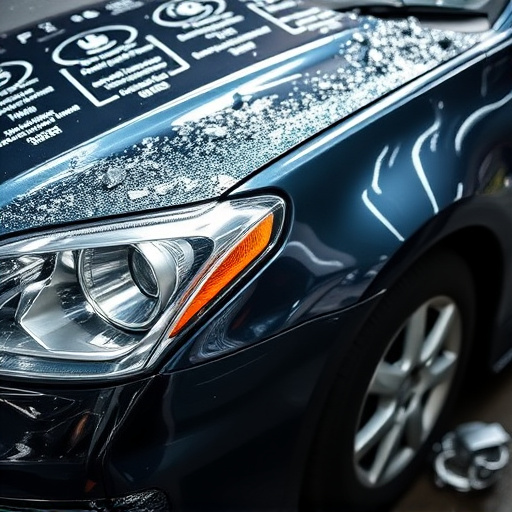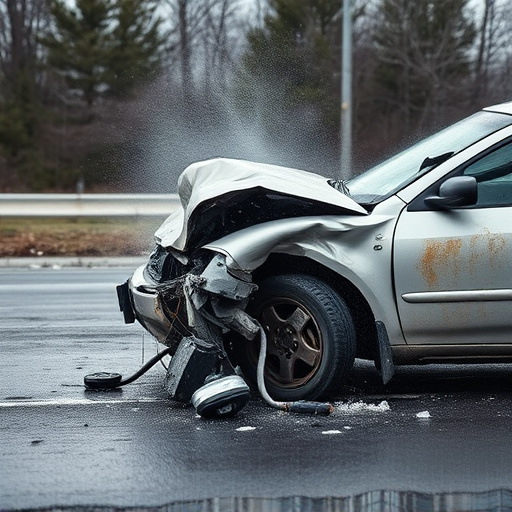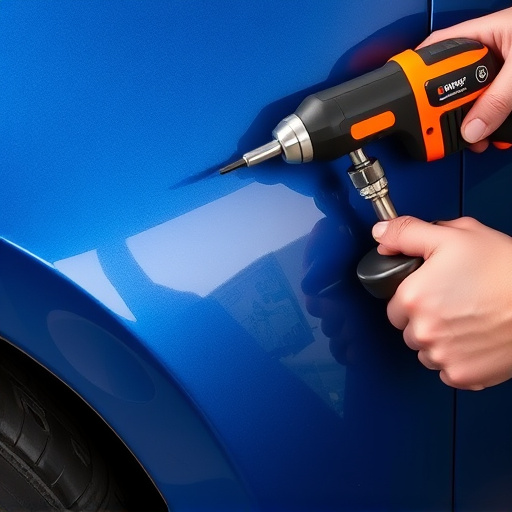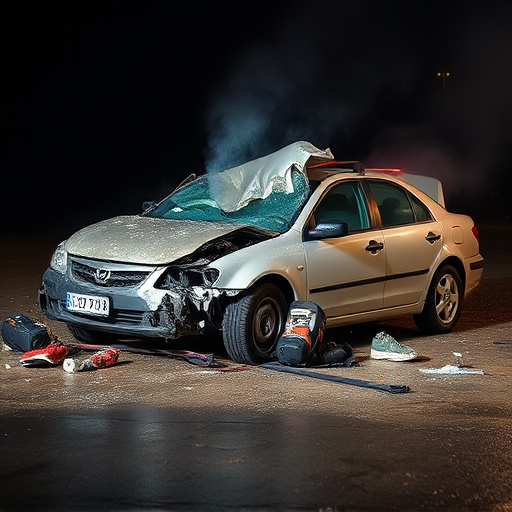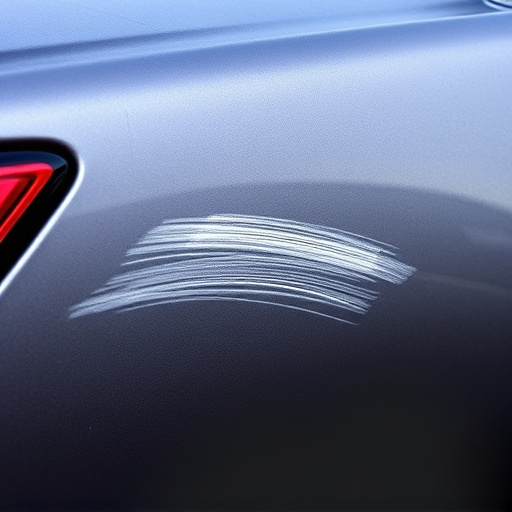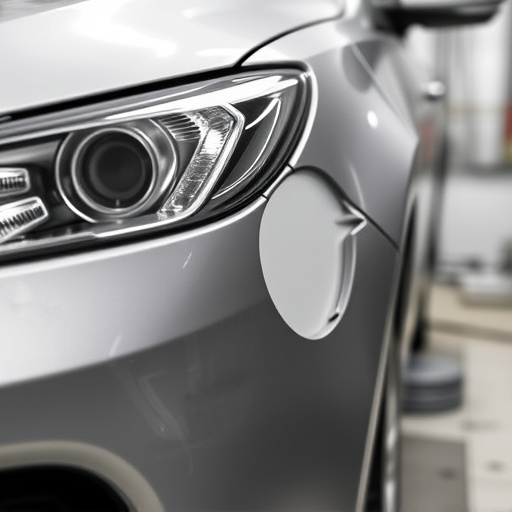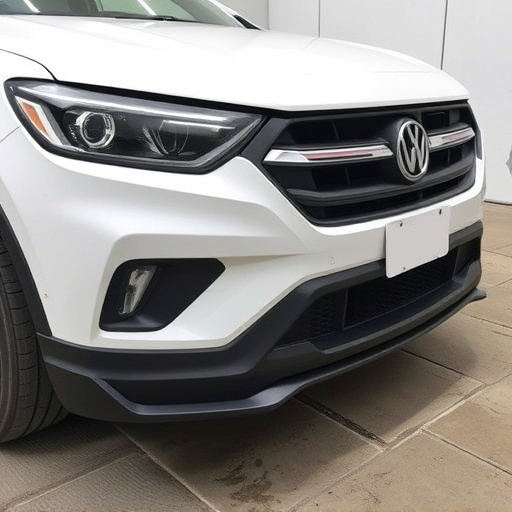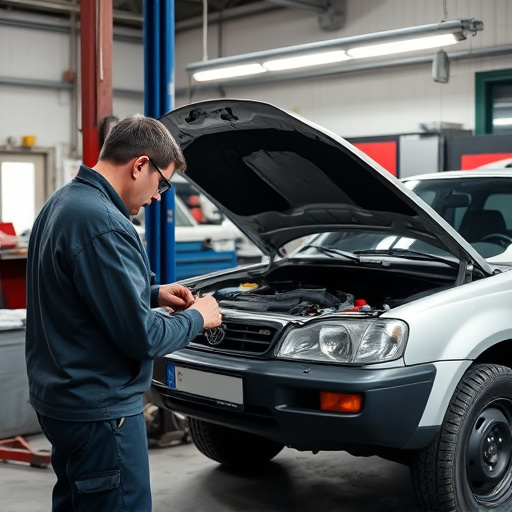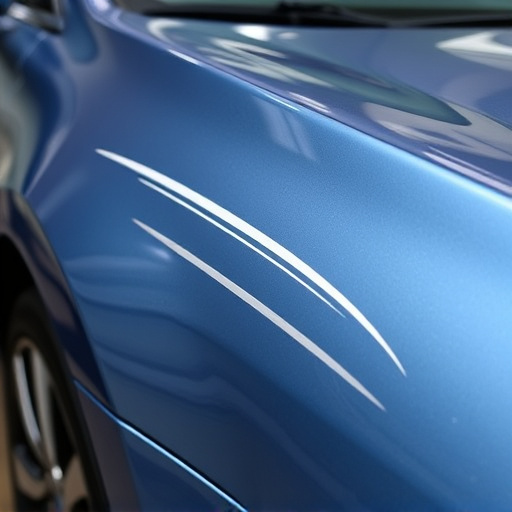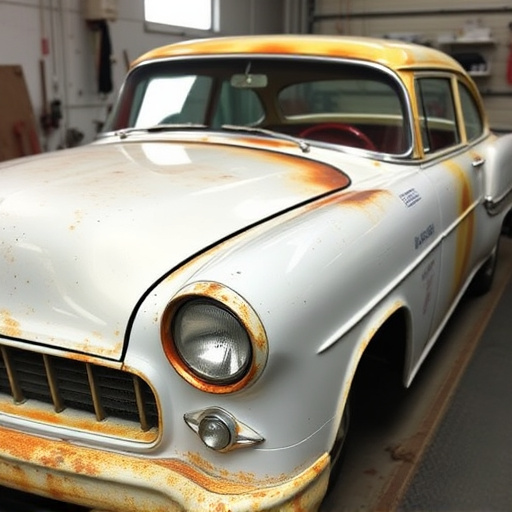Plastic bumper cover repair involves understanding crack causes and using specialized tools like precision knives, adhesives, fillers, and sandpaper to remove dents and isolate cracks. Technicians assess, clean, fill, and paint damaged areas to match original finishes, ensuring both functionality and aesthetic appeal with meticulous care. A well-equipped auto shop is crucial for efficient repairs.
Cracks in your car’s plastic bumper cover can be unsightly and weaken structural integrity. Fear not! This guide equips you with the knowledge to fix those pesky cracks using common tools and materials. From identifying damage to selecting the right compounds, we’ll walk you through a simple, step-by-step process for effective plastic bumper cover repair, keeping your vehicle looking its best.
- Understanding Plastic Bumper Cover Cracks
- Tools and Materials for Repair
- Step-by-Step Guide to Fixing Cracks
Understanding Plastic Bumper Cover Cracks
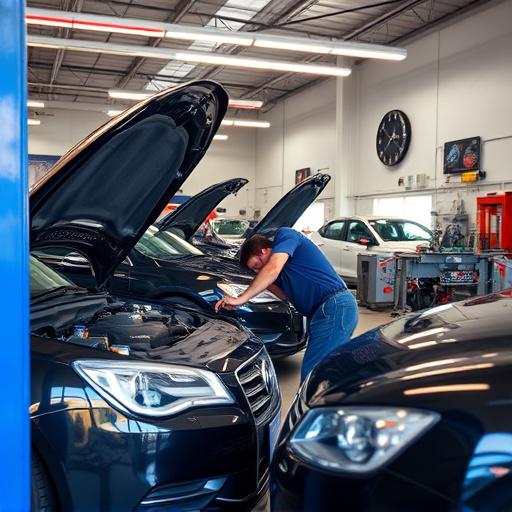
Plastic bumper covers, while durable, are susceptible to cracks due to various reasons such as impact, weather conditions, and age. These cracks can range from small nicks and chips to larger breaks that compromise the structural integrity of the bumper. Understanding the nature and cause of these cracks is crucial for effective plastic bumper cover repair.
Automotive body shops employ several techniques for plastic bumper cover repairs, including using specialized tools for car dent removal and precise automotive body work. The process often involves cleaning the affected area, repairing or replacing damaged components, and then smoothing out the surface to match the original finish. This meticulous approach ensures not only functional restoration but also maintains the aesthetic appeal of the vehicle’s front end.
Tools and Materials for Repair

To successfully fix cracks in plastic bumper covers, technicians require a specific set of tools and materials tailored for this delicate task. For start, they often use precision knives or scissors to carefully cut away any damaged or broken sections of the cover, aiming to isolate the crack. This step is crucial as it allows them to work on the affected area without compromising the integrity of nearby components.
Once the damage is exposed, technicians employ a range of materials including plastic adhesives and fillers designed specifically for automotive applications. These products ensure that not only does the crack get filled but also bonded securely, restoring structural stability. Additionally, they may use sandpaper to smoothen out any rough edges or surfaces left from the initial cut, ensuring a clean and seamless repair that blends seamlessly with the car’s original finish. An auto repair near me or collision damage repair shop will stock these essentials to efficiently handle plastic bumper cover repairs, enhancing vehicle aesthetics in no time.
Step-by-Step Guide to Fixing Cracks
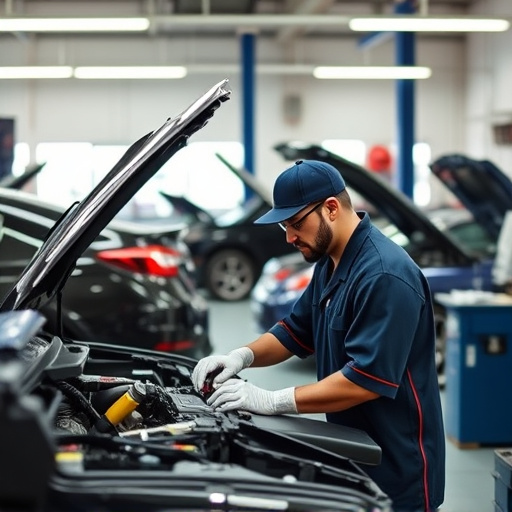
To fix cracks in plastic bumper covers, technicians follow a meticulous step-by-step process. Firstly, they assess the damage and clean the affected area to ensure no debris or contaminants hinder the repair. This involves using specialized cleaners and brushes to prepare the surface. Once cleaned, the technician selects an appropriate filler or resin based on the crack’s size and depth.
Next, they apply a thin layer of the chosen material, carefully filling the crack while ensuring even distribution. After allowing it to set slightly, they smoothen the repair area with fine-grit sandpaper for a seamless finish. This meticulous attention to detail is crucial in achieving an unsightly crack-free bumper that blends seamlessly with the vehicle’s original appearance. The final step involves applying a high-quality clear coat or paint to match the vehicle’s color, completing the plastic bumper cover repair and restoring the car’s aesthetic appeal through top-tier auto repair services.
Fixing cracks in plastic bumper covers is a common task for technicians, who employ specialized tools and materials to restore these automotive components. By understanding the nature of crack formation and following a systematic approach, technicians can effectively mending cracks, ensuring vehicle aesthetics and structural integrity. This DIY-friendly process empowers car owners to tackle minor repairs themselves, saving time and costs, while also promoting the sustainable practice of fixing rather than replacing. For more in-depth guidance on plastic bumper cover repair, explore the tools, materials, and step-by-step instructions outlined in this article.
